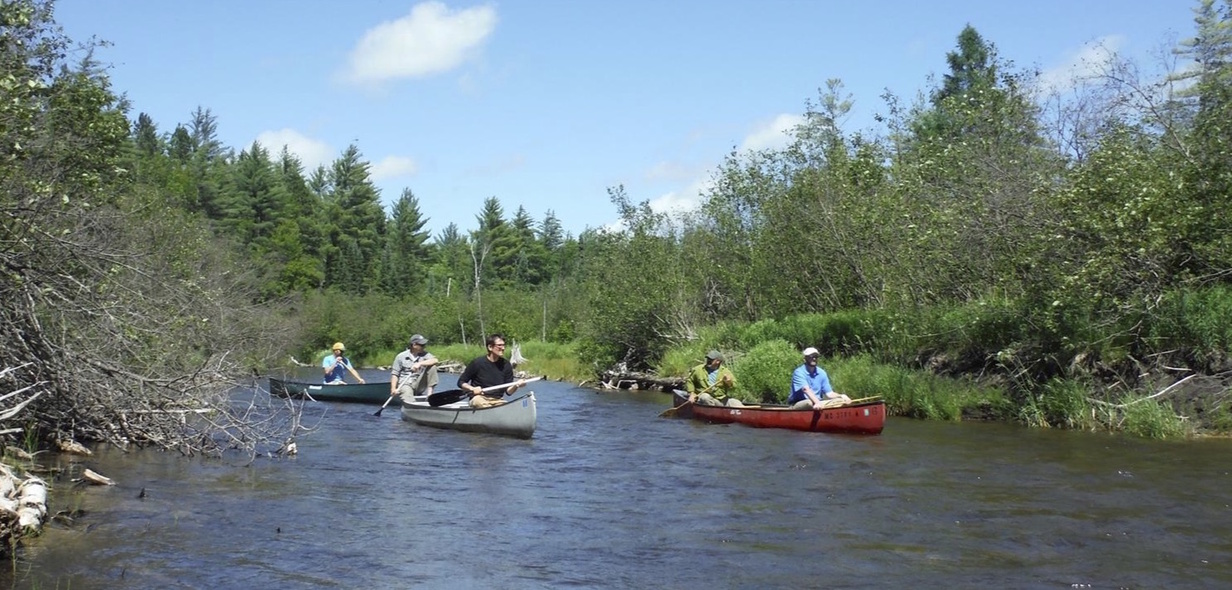
Boardman Dam Removal Nears Completion; Growth Shown Around Brown Bridge
By Beth Milligan | Sept. 30, 2017
Crews working on removing the Boardman Dam and routing the Boardman River back to its natural alignment under the new Cass Road bridge are ahead of schedule, with the project potentially on track for a late October completion.
Alec Higgins, on-site manager for the Army Corp of Engineers, says dam excavation is “95 percent complete,” with workers preparing to begin the final drawdown of the impoundment Tuesday or Wednesday. “There’s about seven or eight feet (of water) remaining in the impoundment,” says Higgins. “We’ll be dewatering in six-inch increments. We’re trying to keep up with sediment as it’s moving downstream, so after we dewater six inches, we’ll wait and try to catch the sediment before we continue (with the next six inches).” The final dewatering process could take two to three weeks, Higgins says.
Earlier this summer, crews staged fourteen large pipes, or siphons, near the new Cass Road bridge where the Boardman’s former natural riverbed lies. Those siphons were used to draw down the impoundment approximately 14 feet, after which time an auxiliary spillway carved into the dam was used to lower water levels another several feet. At that point, crews could safely begin excavating the dam. The entire flow of the river is now directed through the auxiliary spillway; during the final breaching, the river will be diverted into its natural alignment under the new Cass Road bridge.
“Once we do that, the dam excavation is over,” says Higgins. “We’ll just have grading left to do, filling the old spillway, topsoil and reseeding the entire area.” Final remaining work over the winter and spring will include introducing root structures upstream to create habitat and reinforce the riverbanks, according to Higgins.
While Cass Road was slated to be closed until November 11, Higgins says there’s “a good possibility” the road could reopen by mid-to-late October. “Everything’s gone very smoothly so far,” he says, crediting engineering firm AECOM and contractor Michels Corporation with successful excavation efforts. “The last major risk is just the transportation of the sediment downstream. There will still be elevated levels of turbidity (cloudiness) for a while. It could take a year or two for the river to reach an equilibrium again and find its balance; there will be increased sediment moving downstream the last couple years.”
The next phase of the Boardman River Dams Project will be the removal of the Sabin Dam, scheduled to occur in 2018. Plans for modifications to the last remaining dam on the river, the Union Street Dam, are also already underway: Traverse City officials have approved constructing an experimental fish passage project at the site, tentatively scheduled for 2019.
Meanwhile, project team representatives and consultants gave an update on the dams project Wednesday to Grand Traverse County Brownfield Redevelopment Authority (BRA) members that included an overview of conditions at the former Brown Bridge Dam site. Director Amy Beyer of the Conservation Resource Alliance told board members that “the river system ecologically is recovering as we expected it to” in the area, providing a glimpse into the potential future of what could occur along the Boardman as additional dams are removed.
“Two full miles of new river were reborn through (the 2013 Brown Bridge Dam removal), and that was a pretty significant first step for the team,” Beyer said. “Monitoring and surveying of what happens after a dam removal is a really important part of our project.” Beyer showed the board a photo of the upper impoundment of the Brown Bridge area in 2015, two years after the dam’s removal (pictured). A year prior, the Au Sable Institute reported finding an “overall trend of macroinvertebrate community recovery that we observed at virtually all locations” in the project area.
“In two years, this upper channel vegetation has started to come back, and you’re really looking at a very stable situation…lots of green in that picture,” Beyer told BRA members. “We had predictions about what the river’s response would be on an environmental and ecological basis, and we’re collecting data that support that change.” Beyer noted the Boardman’s recovery following the Brown Bridge Dam removal didn’t “happen overnight.”
“But given a couple years, the temperatures are significantly lowered," Beyer continued. "The biodiversity has significantly increased, the fishery is reconnected. That’s what we’re about with these (dam) projects."
Comment






